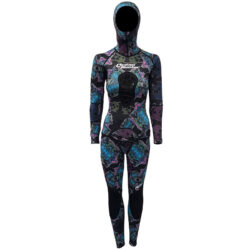All-Season Warmth
Instructor Advice
Diver-Tested Brands
Sydney Dive Ready
Perfect Fit In-Store
Wetsuits for Scuba Diving
Why Wetsuit Fit Really Matters in Sydney Waters
In Sydney, where water temperatures can dip as low as 16°C, your wetsuit is more than just part of your dive kit — it’s your key to staying warm, safe, and comfortable underwater. The right fit helps trap a thin layer of water against your body, reducing heat loss and keeping you focused on the dive — not the cold.
A poorly fitted wetsuit can ruin a great dive. Too loose? Cold water constantly flushes through. Too tight? You'll feel restricted and fatigued. That’s why we always recommend getting professionally fitted in-store. Our experienced instructors will guide you to the right size, shape, and style — making sure it fits snugly at the shoulders, chest, back, and joints without restricting movement.
Not sure where to start? Explore our wetsuit buying guide, see why it's your smartest first gear purchase, or drop by our Sydney dive centre to get fitted by a real instructor.
If you plan to go diving in cooler waters like those around Sydney, investing in a proper wetsuit is essential. Scuba diving wetsuits work by allowing a small amount of water inside — your body quickly warms this water, which, when combined with the suit’s insulation, helps keep you comfortable even in chilly conditions.
Most wetsuits are made from closed-cell neoprene filled with tiny nitrogen bubbles that provide excellent thermal insulation. The inside of the suit may be lined with nylon or fleece for comfort and easier donning, or left unlined (bare neoprene) to reduce internal water movement for better warmth — though these suits can be trickier to put on when dry.
Wetsuit warmth is primarily determined by neoprene thickness. Common options range from 1mm (for tropical snorkeling) to 7mm or more (for cold water diving). In Sydney, where water temperatures vary from 16°C to 24°C, most scuba divers use a 5mm wetsuit year-round, while some prefer a 7mm suit for extra warmth and comfort.
When selecting a wetsuit, think about both the water temperature and the type of diving you'll be doing. More active dives (e.g. repetitive shore entries or drift dives) may call for a slightly thinner, more flexible suit to reduce overheating and improve mobility. If your dives involve longer bottom times with less movement, you’ll benefit from the extra thermal protection of a thicker suit.
Now that you understand how wetsuits work and what to look for, browse our range of diver-tested wetsuits or visit our Sydney dive centre to get professionally fitted for your next underwater adventure!
Our wetsuit Range













